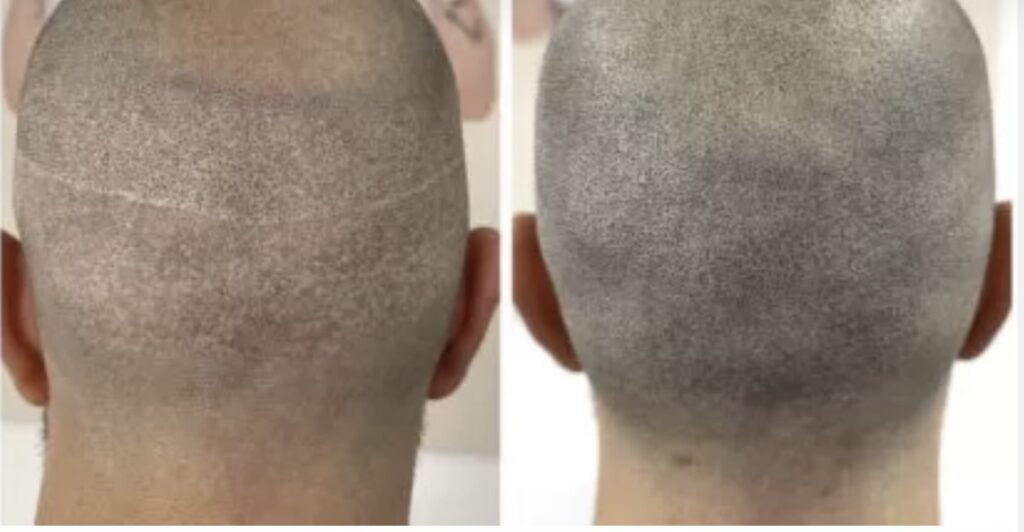
Scalp micropigmentation and hair transplant scars
Hair loss can be a challenging experience, leading many to explore various solutions like hair transplants and scalp micropigmentation (SMP). However, while these treatments offer hope for hair restoration, they can also leave behind scars, causing self-consciousness. In this post, we dive into the realm of scalp micropigmentation and its role in addressing hair transplant scars.
Understanding SMP: Definition and Benefits
Scalp micropigmentation, or SMP, is a non-invasive cosmetic procedure involving the deposition of tiny pigment dots onto the scalp, mimicking hair follicles. Unlike traditional tattooing, SMP is tailored to resemble a closely shaved head, making it ideal for those with thinning hair or baldness. Its primary benefit lies in creating the illusion of fuller hair density, effectively masking bald or thinning areas.
Hair Transplant Scars: Causes and Types
Hair transplant procedures, although hailed for their effectiveness in addressing hair loss, can sometimes leave behind visible scars along the donor area of the scalp, which is typically located at the back of the head. These scars, while varying in appearance and severity, are an inherent consequence of the surgical process involved in harvesting hair follicles for transplantation.
Linear scars are a common outcome of traditional hair transplant techniques, such as strip harvesting. In this method, a strip of skin containing hair follicles is surgically excised from the donor area. The resulting scar often appears as a thin, elongated line across the scalp, where the skin has been closed following the removal of the donor strip. While efforts are made to minimize the visibility of these scars and ensure they are concealed beneath the remaining hair, they can still be noticeable, particularly if the hair is cut short.
On the other hand, Follicular Unit Extraction (FUE) procedures, which have gained popularity in recent years due to their minimally invasive nature, also leave behind scars, albeit of a different nature. Instead of a single linear scar, FUE results in numerous tiny, circular scars scattered across the donor area. These scars are the result of individual hair follicles being extracted using a small punch tool, leaving behind tiny puncture wounds that heal over time. While these scars are typically less conspicuous than linear scars and may be easier to conceal, they can still be visible upon close examination, especially if the scalp is shaved or closely cropped.
Despite advancements in hair transplant techniques aimed at minimizing scarring, the presence of scars remains a concern for many individuals undergoing these procedures. As such, strategies for scar management and concealment, including scalp micropigmentation (SMP), have become increasingly sought after as complementary treatments to enhance the aesthetic outcome of hair transplantation.
SMP for Scar Coverage: Techniques and Advantages
Scalp micropigmentation offers an innovative solution for concealing hair transplant scars. By strategically depositing pigment dots within and around the scar tissue, SMP seamlessly blends the scar with surrounding hair follicles, providing a natural look. Unlike traditional methods, SMP is non-invasive, with minimal downtime and long-lasting results.
Real Results: Before and After SMP
Real-life examples demonstrate the transformative effects of SMP for scar coverage. Before-and-after photos showcase the remarkable improvement in scar appearance, with many clients expressing newfound confidence and satisfaction with their results. We have 5 stars on Google Reviews !


Conclusion
Scalp micropigmentation presents a promising solution for individuals dealing with hair loss and unsightly scars from hair transplant procedures. By harnessing the precision of SMP, individuals can achieve a natural-looking hairline and seamless scar coverage, restoring both appearance and self-confidence. Consult with a reputable SMP practitioner at Finishing Touch SMP to explore personalized treatment plans and confidently embrace a fuller head of hair.

